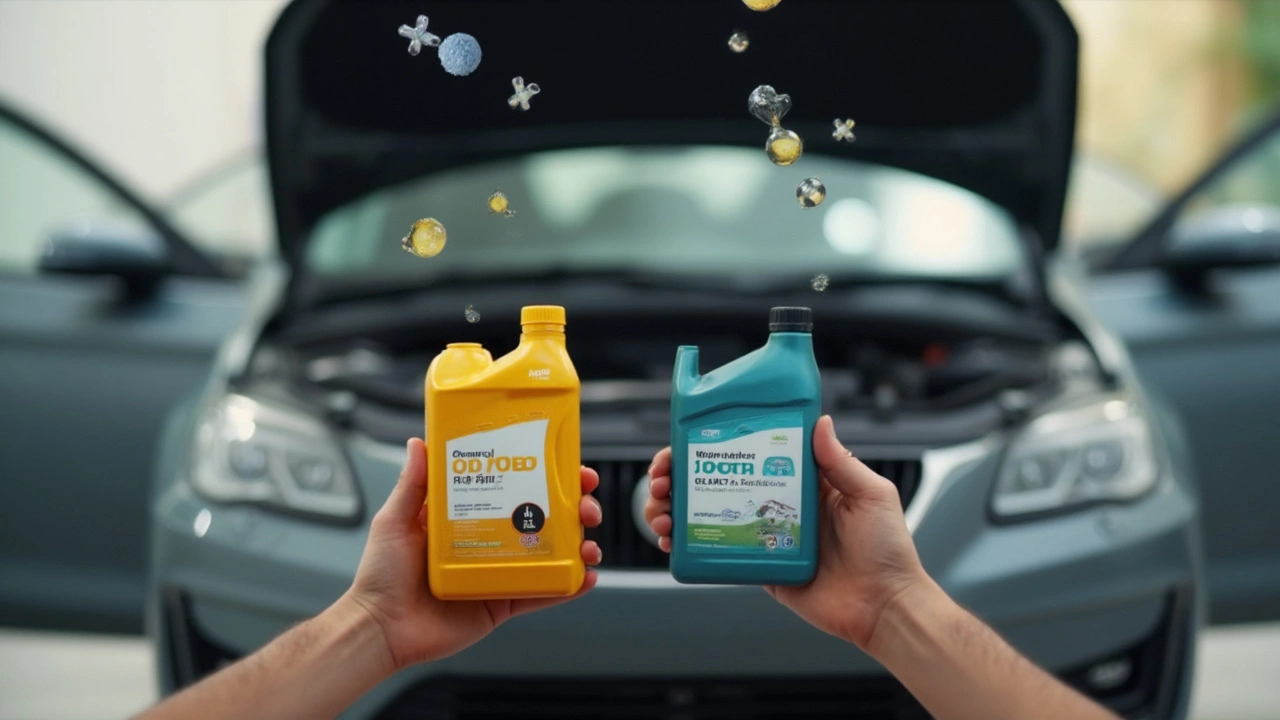Oil Viscosity – What It Is and Why It Matters
When you hear "5W-30" or "10W-40" you’re looking at the oil’s viscosity. In plain terms, viscosity is how thick or thin the oil is. Thick oil flows slowly, thin oil flows quickly. The right thickness keeps engine parts moving smoothly, protects against wear, and helps the car run efficiently.
What Does the Viscosity Rating Mean?
The two numbers in a grade have specific jobs. The first number (the "W" number) tells you how the oil behaves when it’s cold. A lower number, like 0W, stays thinner in winter, so the engine starts easier. The second number shows how the oil holds up when the engine is hot. Higher numbers, such as 40, stay thicker at high temperatures, giving better protection when you’re driving hard.
Think of the oil like syrup. In the morning, when it’s cold, syrup is hard to pour – that’s thick oil in a cold engine. Warm it up, and it flows easily – that’s thin oil when the engine is warm. You want oil that’s easy to move when the engine is cold, but thick enough when it’s hot.
How to Pick the Right Oil for Your Car
First, check the owner’s manual. The manufacturer tested the engine and will list the recommended grade, often something like 5W-30. Don’t just pick a grade you like; using the wrong viscosity can cause poor fuel economy or extra wear.
If you live in a cold area, lean toward a lower "W" number so the engine starts without strain. In hot climates, a higher second number can protect against overheating. Many drivers use an all‑season oil like 5W-30 because it works well in a wide temperature range.
Synthetic oil usually stays stable across temperatures better than mineral oil. That means you can often stick with the same grade year‑round, but it’s a bit pricier. If you drive a high‑performance car or tow heavy loads, a synthetic with a higher hot‑temperature rating can be a good choice.
Don’t forget oil change intervals. Even the best oil breaks down over time. Follow the schedule in your manual or the oil’s label. Changing oil too late can let sludge form, which makes the oil thicker and reduces protection.
Finally, look at the label for API or ACEA certifications. Those symbols show the oil meets certain quality standards. An oil with the right certification plus the correct viscosity rating gives you the best chance for a healthy engine.
In short, viscosity is about thickness at different temperatures. Pick a grade that matches your climate, driving style, and what the car maker recommends. Keep up with regular changes, and you’ll keep your engine running smooth for years.
 30 May 2025
30 May 2025
Engine Oil Choice: Does It Really Matter?
Wondering if the type of engine oil in your car makes a difference? This article unpacks the real impact your oil choice can have on engine health and performance. Get clear answers about viscosity, conventional vs. synthetic options, and what those numbers on the bottle mean. Learn practical tips to keep your engine running smoother, longer. No confusing jargon—just the facts you actually need.






0